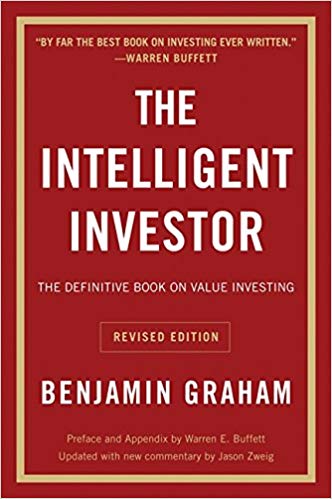A derivative might have many definitions according to the context. In the financial world, however, a derivative is much like a contract between parties. It has a value that’s based upon one or more financial assets. The instruments in this process include stocks, bonds, commodities, currencies, interest rates, etc.
Types of Derivates
The most common types of derivatives are forward contracts, futures contracts, options, warrants, and swaps. So, for instance, you can buy a large appliance such as a dishwasher and check out the warranty to see if it’s a low-risk purchase. Having a contract or a derivative with the company for replacement or refund within a certain period of time will reassure about the value of the appliance.
A stock option has a value derived from the underlying stock. The derivative’s value might be based on assets, but owning the derivative doesn’t mean owning the derivative itself. Other types of derivatives are similar in this regard.
The Uses of Derivatives
Derivatives are mainly used for the purposes of hedging and speculating. If you’re a speculator, you may use a form of derivation to seek profit from the changing prices of its underlying asset, security, or index. One example here could be a trader trying to profit when the index prices drop. They could manage this by selling their futures contract and hence preventing themselves from holding a lower-valued asset.
Alternatively, one can use a derivative as a hedge by allowing the risk in the asset’s price to be distributed between all parties within the contract. Below, we’ll talk about how a derivative reduces the risk of investment in a contract and can help investors gain profits.
Between Parties
Two parties, such as farmers and their clients, can use commodity derivative to insure themselves against losses. The farmer will enter this contract in order to secure a decent price for what they’re selling. The client, such as a miller or contractor, will enter it in order to have a steady supply of whatever commodity they require. Both the parties here have reduced their risk through hedging, but they would still be affected if price change.
Hence, the farmer could face a loss of opportunity if the prices of his commodity actually rise in the market. There could be a storm or natural disaster that drastically reduces the supply of wheat, for instance, but the farmer might have it in stock. However, he’s stuck in a contract and has to supply the wheat at the agreed cost, thus losing the expected rise in income.
On the other hand, the market could have a surplus of wheat that year due to timely rains. As a result, the client would lose out because they’d have to buy according to the stipulations in the contract.
It’s important to understand here that such derivatives could be OTC (over-the-counter) or be on the national securities exchanges programs. Hence, the agreement between the farmer and client, or any other two parties, could be individual or on a national level.
Benefits of Derivates to Buyers and Sellers
We’ll continue our farm metaphor in explaining just how derivatives can benefit the buying and selling parties. A farmer could get worried about the outbreak of a disease in farm animals throughout the country, so may want to protect his business against the expected price drops. He may hence meet and strike a deal with an investor, entering a futures contract with them.
The investor could agree to pay $300 for one cow, for example, no matter what the market price is at the time. This is a gamble, as the price could be higher than that, meaning a loss to the farmer.
This kind of futures contract, however, sets the farmer’s and the investor’s mind at ease. They can both then make future plans without worrying about just how much money they’d have to spend or how much they would earn. On that count, they might then speculate, make arrangements, and even take out loans against the expected future transaction.
Swapping With Derivatives
There’s also a way to swap derivatives, such as interest loans. So, for example, a farmer wants to take out a loan but their current variable-rate loan works against their credit. Lenders may expect interest rates to rise, thus reducing the ability of the farmer to pay them back.
Here, the farmer may look for someone who has a similar-sized loan with a fixed interest rate. If the latter predicts that the interest rates would actually fall, they might want to swap their loan for a variable-rate one. In such cases, it might be possible for the two parties in debt to swap their loans.
However, the names on the loans won’t change, only the payments. This means a bit of risk, as one party defaulting or going bankrupt would mean that the other would still be stuck with their original loan. The benefit here, though, is that both parties can adjust their loans according to their needs.
The Buying of Debt
This concept is more for the benefit of lenders, specifically those who’ve lent out all their capital. After loaning, a lender might find someone who has a huge amount of collateral and requiring a loan with higher interest rates. Derivatives provide a solution to this situation.
What the lender can do is sell out one or more of his loans to a speculator. One can manage this by spinning the loan and making it a credit derivative. This way, the lender can get the capital back, even if they don’t get the expected return. They can then issue the capital again at better rates and hence earn more. This method would hence reduce the risk and allow the lender to make the most of his capital.
Options
Options come in handy when someone wants to transfer their risk and have a safer investment on their hands. This includes a deal when the investor pays someone a fee so that the latter might buy their shares sometime in the future. This purchase is a choice, but not an obligation.
This way, in case the share prices go down, the potential purchaser would protect the investor from any loss. The purchaser would have the fees money, so they would also be stable.
Conclusion
All these versions of derivatives work to move around risk and help to gain rewards for those who want to invest. These are tools that can financially help out those who want to avoid risk, but also help those who don’t mind a little danger now and then. You need to know how to use these tools properly, or they can be somewhat destructive as well. While they may have advantages and disadvantages, their potential for enhancing a financial system’s functionality is quite unique.




